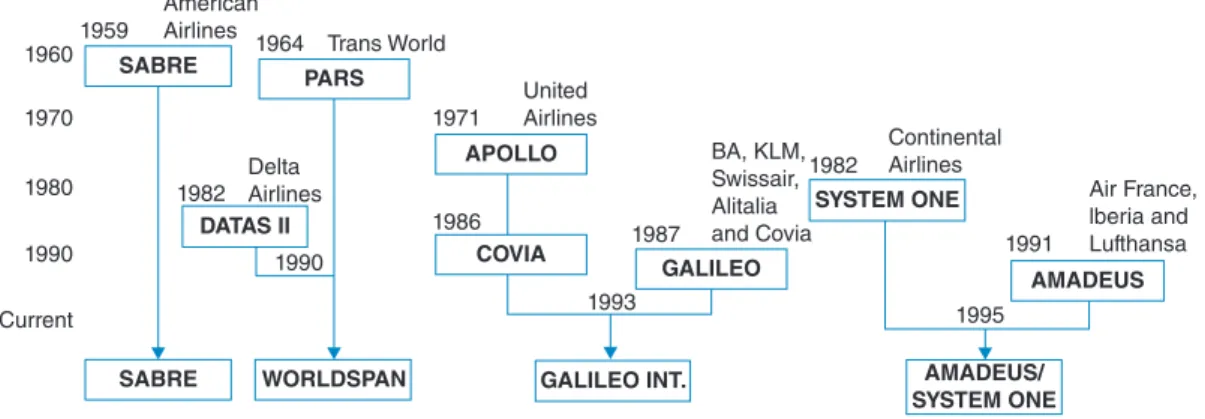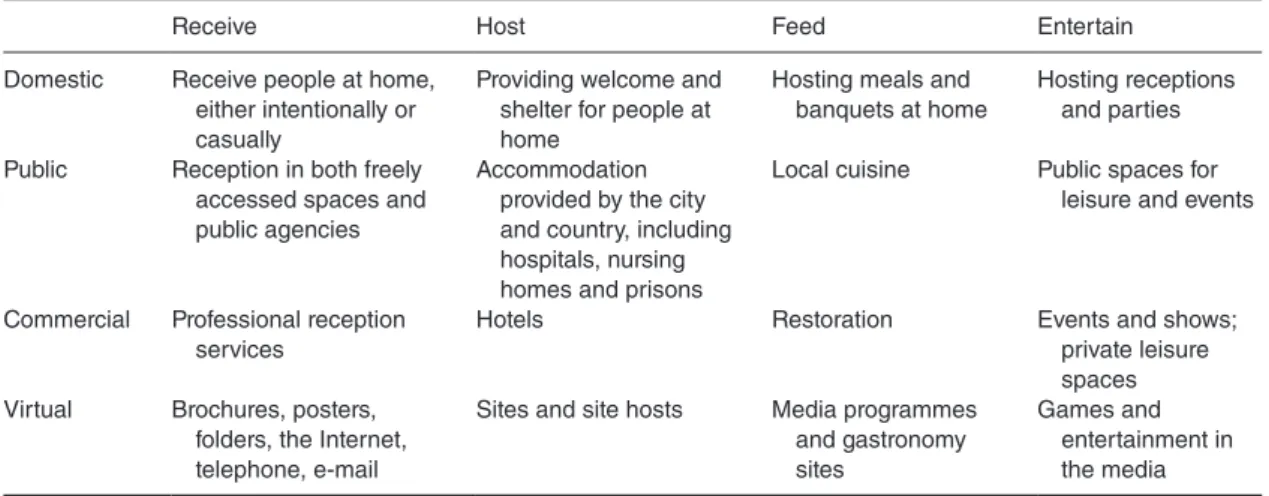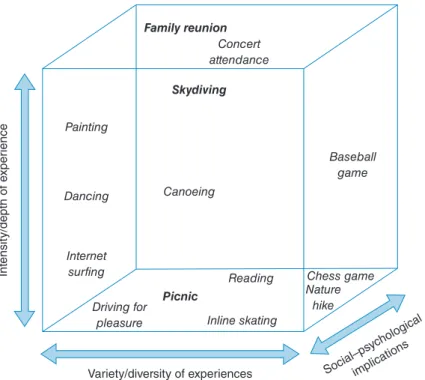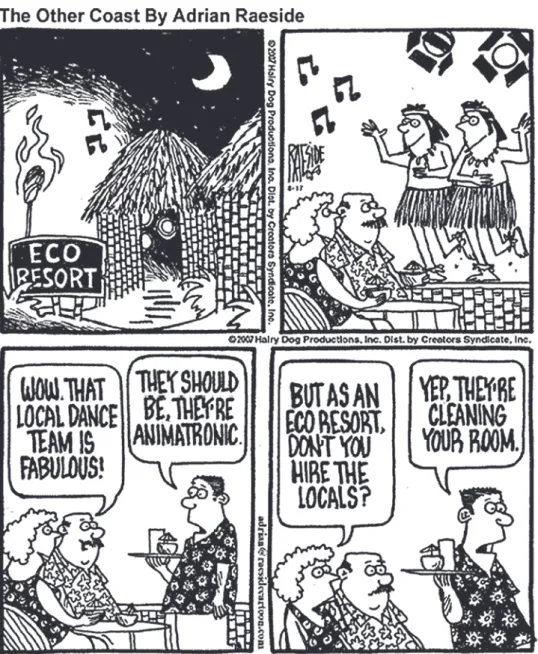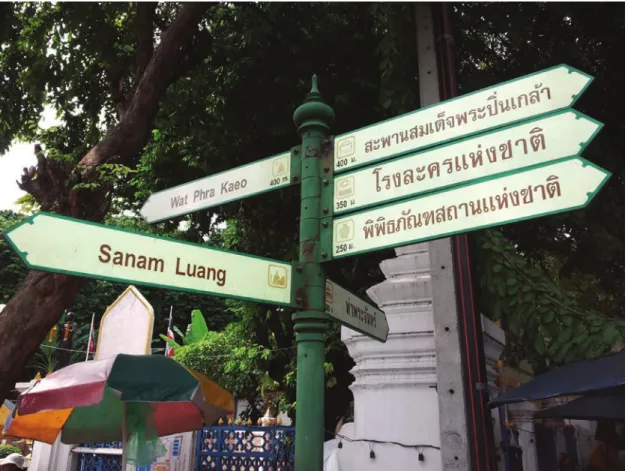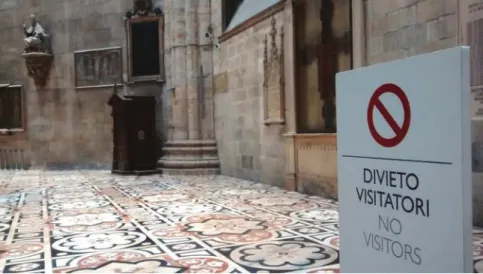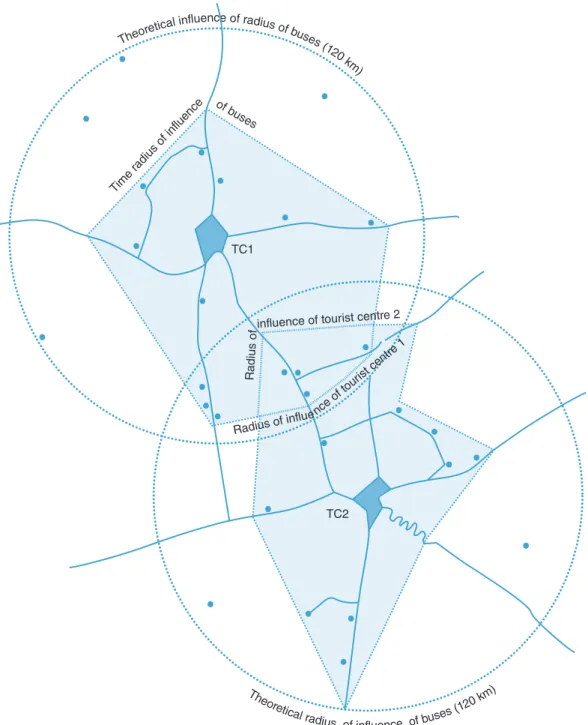The opinions, hypotheses and conclusions or recommendations presented in this book are the responsibility of the authors and do not reflect the views of FAPESP. The opinions, assumptions and conclusions or recommendations contained in this material are the responsibility of the authors and do not necessarily reflect the views of FAPESP.
Fundamental Concepts
General Systems Theory and Tourism
This book presents a theory for open systems of all kinds; his general systems theory is intended to be interdisciplinary. For Leiper (1995), the primary advantage of general systems theory is that it clarifies something that would otherwise be complex.
The failure of systems theorists to appreciate the history of their theory
The failure to specify precisely what is meant by a ‘system’
The vagueness about what it means to be included in systems theory
The weakness of the charges brought against the analytic or mechanistic method
The failure of general systems theory as a scien- tific theory
From Leiper, 1990.) (iv) the tourist; and (v) the tourism and travel industry (tourist information centers, lodging establishments, etc.). According to Lohmann (2004, p. 12), 'The main advantages of Leiper's model are its simplicity and general applicability, making it a useful way of 'visualizing' the tourism system.
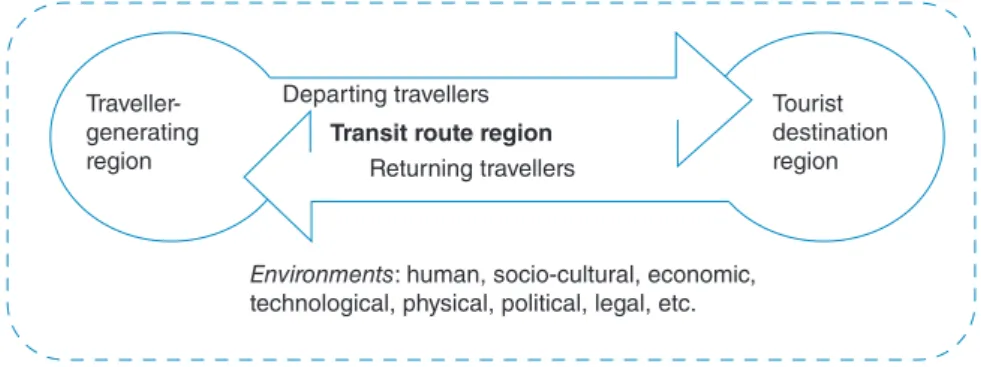
Environmental relationships, which are composed of cultural, social, ecological and economic subsystems
The structural organization, which consists of the superstructure and infrastructure subsystems
In addition to these academics, many others have applied general systems theory in their studies of tourism, including Roberto C. Determine the strengths and weaknesses of analyzing tourism as a system, based on general system.
Establish the strengths and weaknesses of ana- lysing tourism as a system, based on general sys-
One pioneering but little-known approach was presented by Hunziker (1943): analyzing tourism as part of a system. For example, systems models offer some explanations of how tourism works, but cannot deepen knowledge of important facts for a comprehensive understanding.
What other theory might explain tourism? Do you know of another one? What advantages does
- Hospitality
In the universe of tourism studies, the topic of hospitality has been addressed primarily from a management perspective, with a simplistic view of the triad of food, beverage and accommodation services (Brotherton, 1999; Lashley, 2000; Bell, 2011). The work of Conrad Lashley (Lashley, 2000; . Lashley et al., 2007) is noteworthy, not only in the authors' articulation of this topic, but also (and especially) in relation to the "three domains of hospitality" model. '.
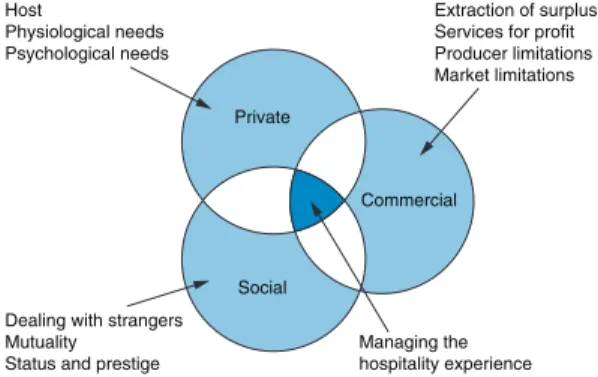
Countries that either need specialized manual labour or have recorded a decrease in their younger
The theory of the gift (give-receive-return) proposed by Mauss (1968) is essential to understanding the concept of hospitality because it establishes the principle that governs human action. In this sense, the construction of a universal concept of hospitality is a process: with each new social interaction there will be other relational nuances to consider, defining the meaning of the hospitality experience.
- Leisure
- Entertainment
- Recreation
- Tourism and Travel
- Food and beverage
There is also a difference between the use of the terms 'travel' and 'tourism' in academia. In 1835, the word was recognized and included in the dictionary of the Académie Française (New Concise Larousse Gastronomy, 2007).
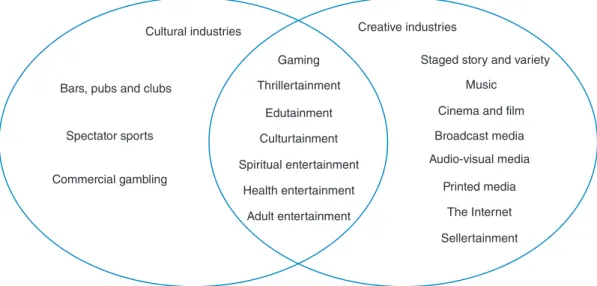
Look at your city or region and list the most traditional foods and beverages. Reflect on the
On cruises, for example, the food and beverage area is a star attraction, guaranteeing unlimited meals (such as breakfast, brunch, lunch, afternoon tea, dinner and supper, as well as other options 24 hours a day). an international standard of quality. Catering: provision of meals (with varying levels of complexity) ready for consumption in places that are not food and beverage establishments, such as meals on various modes of transport and at event venues.
Search for websites promoting gastronomic tour- ism destinations and try to understand how each
In the first category, the primary motivation is the gastronomic attractions and activities in the destination that are mainly related to food. Regional events: these events can attract a moderate number of visitors, including tourists living in the same region who spend the night because of the event.
Visit the site of the Suntec Singapore Convention and Exhibition Centre (http://www.suntecsingapore
Identify major events in your city and region
Although widely coveted due to their global importance, sporting mega-events are often used
- Authenticity in Tourism
Scale: the relationship between the size of the object and the environment in which it is located. In this sense, the tourist experience is not necessarily concerned with the authenticity of the toured objects.
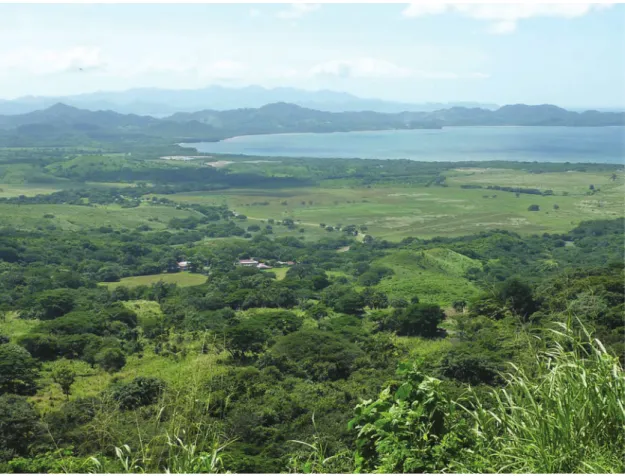
Disciplines and Areas of Study
Jafari’s Interdisciplinary Model
Jafar Jafari1 is the founder of the scientific journal Annals of Tourism Research, published in English since 1973 and in Spanish since 1999. 1 For more information on Jafar Jafari's contribution to tourism studies, see Xiao, H. The basics of tourism education.
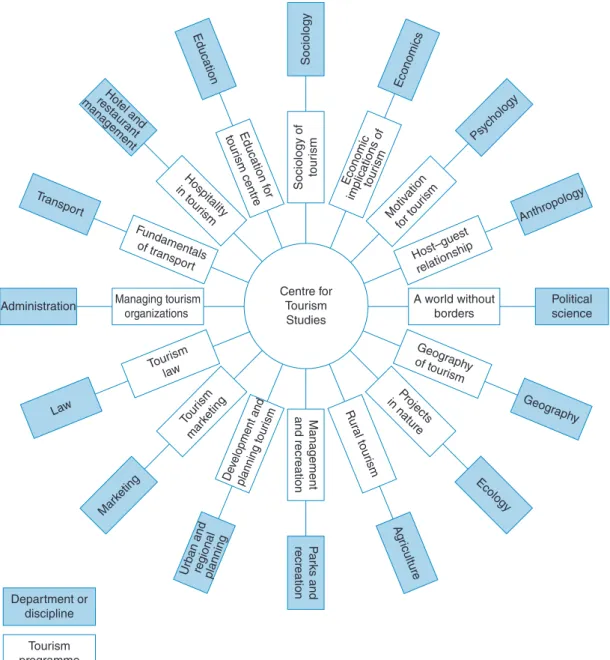
Ethics in Tourism
A more direct definition gives that 'ethics is the theory or science of human moral behavior in society. According to Lea (1993), little attention was paid to the topic of tourism-related ethics until the early 1990s; Fennell (1999) suggested that previously there was little scientific research in the area.
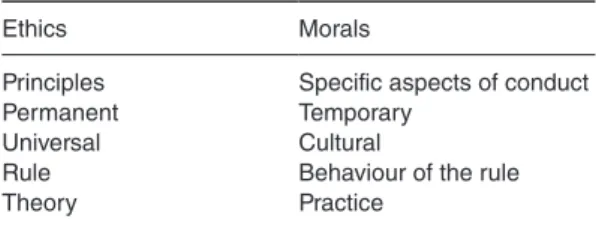
In your country, region or company, is there con- cern about including minority groups in the tour-
- The Anthropology of Tourism
Despite this dense field of emerging issues, there are theoretical areas in the anthropology of tourism that remain largely unexplored. It is hoped that in the future, these areas deserve development and attention from researchers in the field of tourism anthropology.
Culture is structure, in which the different ele- ments of culture are interrelated in a complex net-
Culture is structure, in which the different elements of culture are connected in a complex network.
Culture defines communities, characterizing and differentiating them from others, which leads to a
- Culture and Tourism
There is another aspect of the cultural exchange debate that deserves attention in the literature on culture and tourism: the impact of the activity on host societies. In addition to the 1972 Convention, there is a large set of heritage charters that (either directly or indirectly) credit some of the functions of heritage.
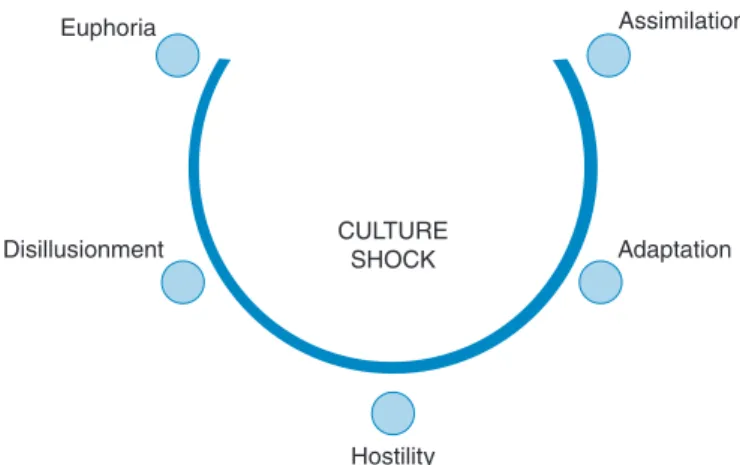
Any interpretation that does not somehow relate what is being displayed or described to something
Contrary to cultural pessimists, some cities began to look for alternative models; the most fashionable are based on the concept of creative industries, including tourism and related activities (Richards and Wilson, 2006; Richards, 2011). This moves from a logic of cultural tourism, which focuses on the consumption of products and passive learning usually associated with high culture, to a logic of creative tourism, which involves more dynamic activities in a co-creation process and active development of skills, enabling creative consumption and creative production of tourists (Richards and Wilson, 2006).
Information, as such, is not interpretation
Thus, as an alternative to the serial reproduction of culture, practices favoring creativity as part of the tourist experience began to emerge. Freeman Tilden (1957) proposed a set of principles for the interpretation of heritage, which considers the activity of visiting as one of the major tools for its knowledge and valorisation.
Interpretation is an art, which combines many arts, whether the materials presented are scien-
Thus, cities that were generally spaces for the spread of industry now—after experiencing de-industrialization—take on the role of spaces for consumption. Important examples are major European (London, Paris, Berlin) and North American (New York and Chicago, among others) cities, where various structures and locations in the city are known for their cultural and entertainment activities (p .eg museums, cultural centers, gastronomy, night life).
The chief aim of interpretation is not instruction but provocation
Interpretation should aim to present a whole rather than a part and must address itself to the
Interpretation addressed to children (say, up to the age of 12 years) should not be a dilution of the
- Postmodernity and Tourism
- Psychology and Tourism
- The Sociology of Tourism
- Boullón’s Theory of Touristic Space
These trends can be seen as manifestations of the postmodern phenomenon in tourism (Nuryanti, 1996). 2014) Psychology and its application in tourism. 2006) Modeling Iso-Ahola's motivation theory in the tourism context.
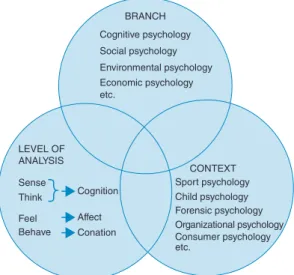
Elements covering relatively large surface areas
Elements that are localized, covering relatively small areas
Longitudinal elements
- Nodal Functions
- Tourism Public Policy
This makes node E the gateway to node A and thus the egress from A to the rest of the network (the same applies to the node C/D relationship). According to Dredge and Jenkins (2011), planning and policy research in the field of tourism is relatively new, beginning at the turn of the century.
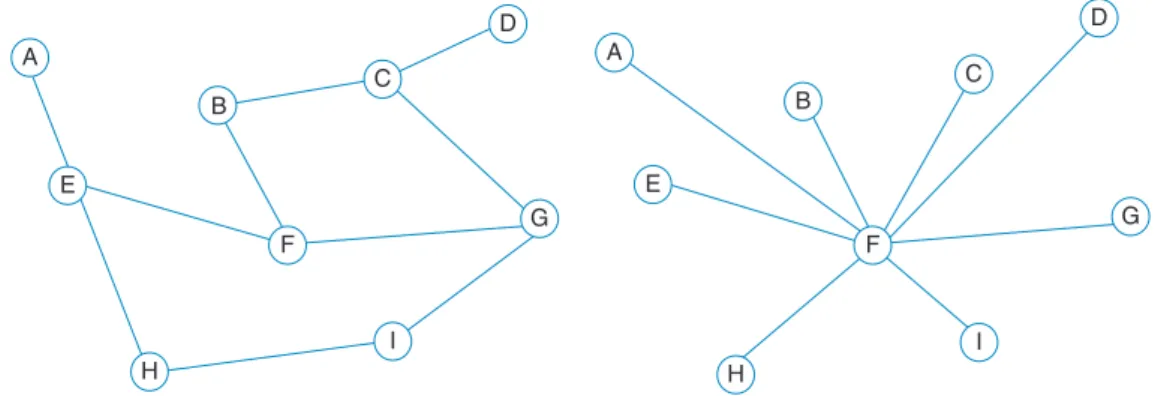
There is a clear hierarchy of offices
New spaces of tourism planning and policy. eds) Stories of Practice: Tourism Policy and Planning. Policy networks and local tourism organization. 2013) Tourism Policy and Planning: Yesterday, Today and Tomorrow.
The functions of the offices are clearly specified
In 2012, the Malaysian Ministry of Tourism received the World Tourism Organization's Ulysses Award in the Innovation in Public Policy and Governance category for the Malaysia Homestay Experience Program. After consulting the website of your country's highest government tourism agency, determine the tourism policy that your country has put in place.
Officials are appointed on the basis of a contract
The program was launched in 1995 and since then hundreds of thousands of domestic and international tourists have stayed in the homes of Malaysian families. 2012) From local promotion to regional tourism policies: knowledge processes and actor networks in North Jutland, Denmark. ed.) Tourism, regional development and public policy.
Officials are selected on the basis of professional qualification, ideally substantiated by a diploma gained
There is a career structure, and promotion is pos- sible either by seniority or merit
Promotion is made according to the judgment of superiors
The official may appropriate neither the post nor the resources, which go with it
The official is subject to unified control and a discip- linary system
- Tourism Planning
- Tourism Balance of Payments
- Tourism Satellite Account
Identify the purpose of the document and what type of tourism is planned for the destination in question. According to the double-entry bookkeeping method, the amounts on both sides of the balance of payments must be equal.
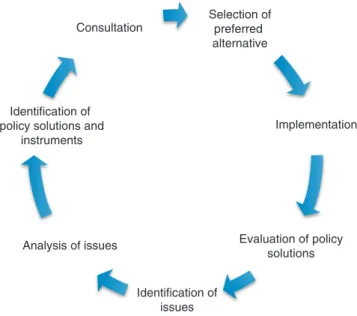
Accommodation for visitors
Following the International System of Activity Classification (United Nations, 2008), the TSA Conceptual Framework identified 12 tourism signature products:.
Food services
Railway passenger transport
Road passenger transport
Water passenger transport
Air passenger transport
Transport equipment rental
Travel agencies and other reservation services
Cultural services
Sports and recreational services
Country-specific tourism characteristic goods
Other country-specific tourism characteristic products
Inbound tourism consumption, per product and type of visitor
Domestic tourism consumption, per product and type of visitor
Outbound tourism consumption, per product and type of visitor
Internal tourism consumption, per product
Production accounts of tourism characteristic activities and other activities (at basic prices)
Domestic supply and internal tourism consump- tion, per product (at purchasers’ prices)
Employment in tourism characteristic activities
Gross capital formation of tourism characteris- tic activities and other activities
Tourism collective consumption, per product and level of government
Non-monetary indicators
- The Tourism Multiplier Effect
In other words, the tourism multiplier effect is the multiplication of the economic impacts that occur as a result of the many rounds of transactions encouraged by the injection of tourism revenue into the economy. The Tourism Multiplier Effect 107 the Keynesian method. the leakages represented by saving and imports, omitting leakages related to taxes.
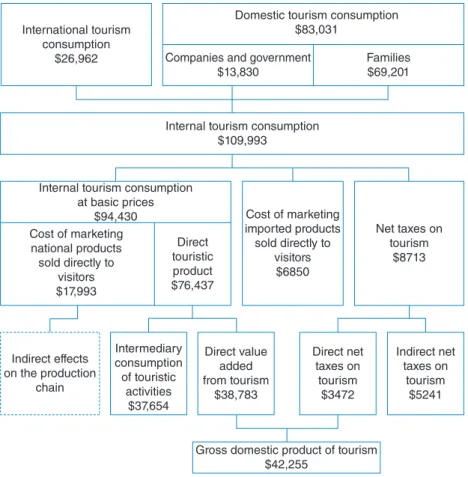
Using data from the World Bank (http://data
According to the estimates, Argentina had the highest tourism multiplier effect among the countries studied. As an example, Singh's calculation for Brazil appears below and Table 10 presents the estimates of the multiplier effect for each of the 17 countries studied.
Search the Internet to find the input–output matrix of a country of your choice. Compare
- Tourism Administration
The functions of tourism planning are already covered in this book under 'Tourism Planning'; the organizational and direction functions can be seen in the entry on 'Tourism public policy' and to a lesser extent in various other items. The environment category takes into account the atmosphere of the service the tourist finds at the attraction.
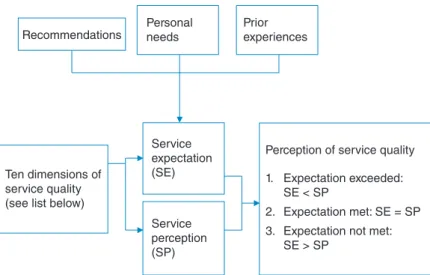
How can access to the attraction be evaluated (streets, pathways, parking, business hours, ticket
To diagnose the current situation, based on planning and control, you must list the strengths and weaknesses of your company.
What do you consider the environment of this attraction to be like (questions of tourist comfort,
How would you evaluate service delivery in terms of the human element (service, confidence,
How do you evaluate the overall security at the attraction?
How does the attraction affect the tourist’s expe- rience in terms of learning, aesthetic contemplation,
How do you evaluate the issue of prices, man- agement of climate conditions, variety of activities
Finally, list the attraction’s strengths and weak- nesses and describe possibilities for innovative
- Tourism Clusters
- Tourism Marketing
- The Economics of Tourism Companies
In these cases, the price of the service can be determined by analyzing the prices charged by the competition. The company's total cost function based on the number of passengers transported is:.

Resource management complying with the fair- est rules, allowing profits for investors and the local
Krippendorf (1984) later presented his sharp critique of the 'holiday machinery' and proposed 23 theses for the humanization of travel in the book Die Ferienmenschen. Pires (2002) listed the various initiatives that emerged: in 1976 there was a seminar on the social and cultural effects of tourism promoted by the World Bank and the United Nations Educational, Scientific and Cultural Organization (UNESCO). ); In 1980, a conference was called by the World Tourism Organization (WTO), which is considered a milestone in tourism's change in.
Intergenerational equality and respect for ways of life and customs
- Sustainability in Tourism
In his studies of Spain, Bernáldez pointed to a number of critical problems, including the following: land use and negative landscape transformation caused by the construction of buildings and infrastructure; increased production of garbage, solid waste and wastewater; Swarbrooke (1999) tried to define and operationalize sustainable tourism by combining definitions of sustainability in tourism, among which the idea that sustainable tourism is economically sustainable but does not destroy the resources on which the future of tourism will depend, especially the physical environment, is noteworthy. and the social structure of the host community' (Swarbrooke, 1999, p. 13).
Evaluating the limits of nature in terms of support- ing human interference and preserving places with
Vigor of plant species Number of complaints from visitors Area without vegetation Extent of diseased vegetation Visitor perception of impact on the. Number of ‘social’ trails Presence/absence of selected wildlife Visible erosion Frequency of wildlife sightings.
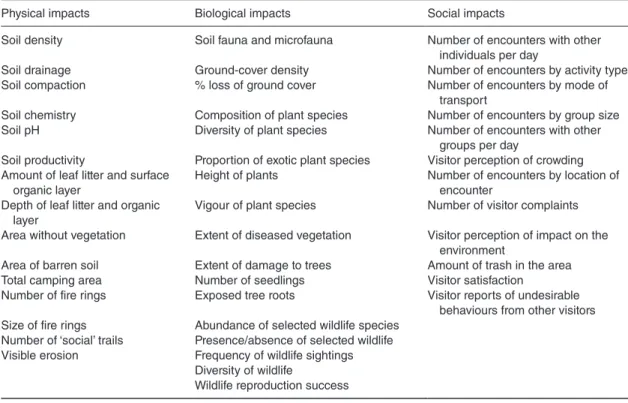
The relationship between what is being shown or described and something from the visitor’s per-
Environmental interpretation seeks direct contact with an environment4, giving the individual the opportunity to develop environmental awareness and assimilate knowledge. The principles of environmental interpretation evolved from the work of Tilden (2007), for whom environmental interpretation is “an educational activity that aims to reveal meanings and relationships through the use of original objects, through first-hand experience, and through illustrative media. , rather than simply communicating factual information' (Tilden, 2007, p. 33).
Interpretation is an art that combines many arts, regardless of whether the material presented is sci-
Interpretation is an art that combines many arts, regardless of whether the material presented is scientific.
The fundamental goal of interpretation is not instruction but provocation, which awakens
Interpretation should aim to present informa- tion as a whole instead of as an isolated part, and
It is extremely important to choose one of these dimensions to start the work, without losing sight of the fact that in the future, as the project matures, the chosen dimension must be related to the other dimensions not yet have been taken into consideration. In your text, discuss some of the dimensions, such as economic, social, environmental, cultural and political sustainability, that are involved in these types of projects.
The Tourist
Tourism Demand
To further explore the topic, use secondary sources such as magazines, newspapers and personal statements and analyze cases that illustrate real-life cases where different factors have influenced tourism demand. 2010). Effects of international tourism demand on the economic growth of small economies dependent on tourism. eds) (2012) Modeling and Forecasting Tourism Demand.
Tourist Experience
Analysis of the phenomenon of the search for experiences in tourism tends to be based on the 'experience economy' or 'experience marketing'. For much of the tourist trade, the traveler's motivation and the sensory/emotional essence of their travel experience are less important.
Determinant and Motivational Factors
In the case of a specific trip, various determining factors generally influence the choice of tourist destination, the date of the trip and its length, any companions and travel-related expenses (Swarbrooke and Horner, 2007). Several other factors characteristic of the tourist destination did not affect the tourist's length of stay, namely: "the hygiene and cleanliness of the place, its safety, easy transportation, medical coverage or the availability of shopping centers."
Considering the results obtained by Alén et al
For trips that are part of group tour packages, the schedule often includes free time so that each tourist can explore in an unstructured way the aspects of the destination that best suit their personal motivations. Visiting friends and relatives had a significant impact on length of stay compared to other reasons for traveling (e.g. vacation, health, and work).
Considering the trip of your dreams, discuss your choice of tourism destination and activities,
- Crompton’s Destination-choice Model
The 'action set' includes all tourist destinations whose promoters or representatives (eg travel agencies) can be contacted by the tourist. Destinations for which additional information is requested without any personal interaction with a destination representative are in the "quiet" group.
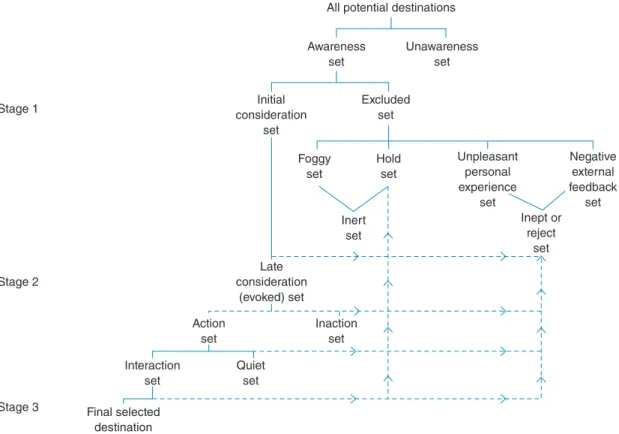
It is useful in research planning
It shows which factors influence the decision to travel
It can be used as an indicator for marketing activities to influence the tourism decision-making
It can be used to determine criteria to attract specific tourism segments
- Schmöll’s Tourism Consumer Choice Model
TRAVEL STIMULI Advertising
CHARACTERISTICS AND FEATURES OF SERVICE DISTRIBUTIONCost/value
- Tourism suggests movement in space and time
- The tourist’s stay outside of their place of ori- gin is not indefinite; instead, there is an intention to
- The objects of the tourist gaze contrast with work
- A considerable portion of the world population travels, a factor that creates new forms of social
- The places visited are chosen based on subjective factors, which create a specific expectation for each
- The gaze is directed towards landscapes and townscapes that are not common in the tourist’s
- The tourist gaze is constructed through signs
- A variety of tourist professionals have been cre- ated and attempt to make new discoveries of the
- Urry’s Theory of the ‘Tourist Gaze’
- Plog’s Psychographic Model
In some cases, becoming a tourist destination is part of a reflexive process by which societies and places "enter" the global order (or "re-enter," as in the case of Cuba in the 1990s). In Jaipur, the capital, also known as the "Pink City", the atmosphere of spirituality often leads to the reluctance of the consumer before the local specialty, the manufacture of jewelry with an abundance of rubies, sapphires and diamonds.
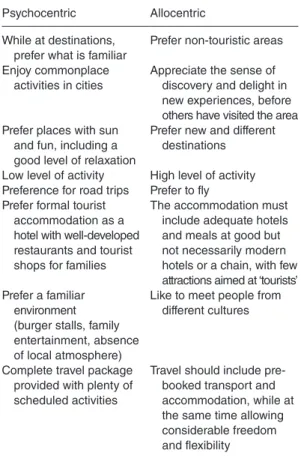
Peter Gray
- Traveller Typologies
- Looking at the place where you live, which type of tourist is the most prominent? Explain why
- Discuss the following statement: ‘The natural tendency of a tourism destination is to attract psy-
- Klenosky and Gitelson’s
This group was completely consistent with the promotion of the tourist destination, which was sold as a place where "the sun is guaranteed". Lord Byrons: The main characteristic of this type of tourist is their habit of returning to the same destination and in some cases to the same accommodation every year.

Intermediation, Distribution and Travel
- Tourism Distribution Channels
- What are the main functions of an airline’s computer reservation system (CRS)?
- What is the difference between a CRS and a GDS?
- Identify the channels that are used most frequently by an airline with a strong international presence
- Choose an airline and try to map its distribution channels as presented in Fig. 47
- Travel Agencies
Before the development of the Internet, tourism suppliers had no choice but to use intermediaries, such as travel agencies and tour operators. Sales offices and airport counters The sales office is the strongest link in the chain connecting the customer and the airline.
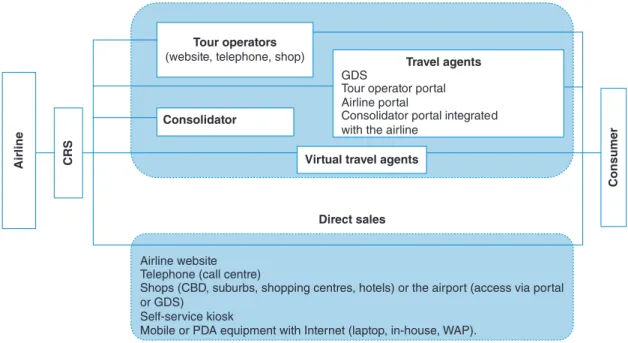
Enters travel agent with one
Flight Center is a success story because it has quickly achieved performance levels that surpass its competitors. Write about a travel agency in your city, describing both its type and all its departments.
Enters travel agent with a destination
It is a highly competitive travel agency and its success can be attributed to its competitive and collaborative activities. Both the organization and the individuals in the Flight Center have a spirit of competition and cooperation with each other.
Enters travel agent to seek advice on
- Operational efficiency, leading to time and money savings, a reduced number of duplicate res-
- Access to information from competitors that use CRSs from other companies because they do not
- Information about customers (passengers) from reservations made on the system: companies that
- An increase in the number of reservations made on flights of CRSs’ parent carriers, primarily because
- Display bias: CRS parent carriers show their own flights first on the computer display (GAO, 1992)
- Computer Reservation System
- Extra source of revenue, as other airlines must pay to have their flights available on CRSs, thus not
- What are the main functions of an airline’s CRS?
- What is the difference between a CRS and a GDS?
- Mariot’s Model of Tourist Flows
- Campbell’s Model of
- Multi-destination Travel Pattern Models
In the 1980s, airline executives and CRS realized that air travel was only a small part of the complex tourist travel experience. According to Shaw (1993), in the 1980s, 80% of flight bookings made by travel agents appeared on the first page of results.
